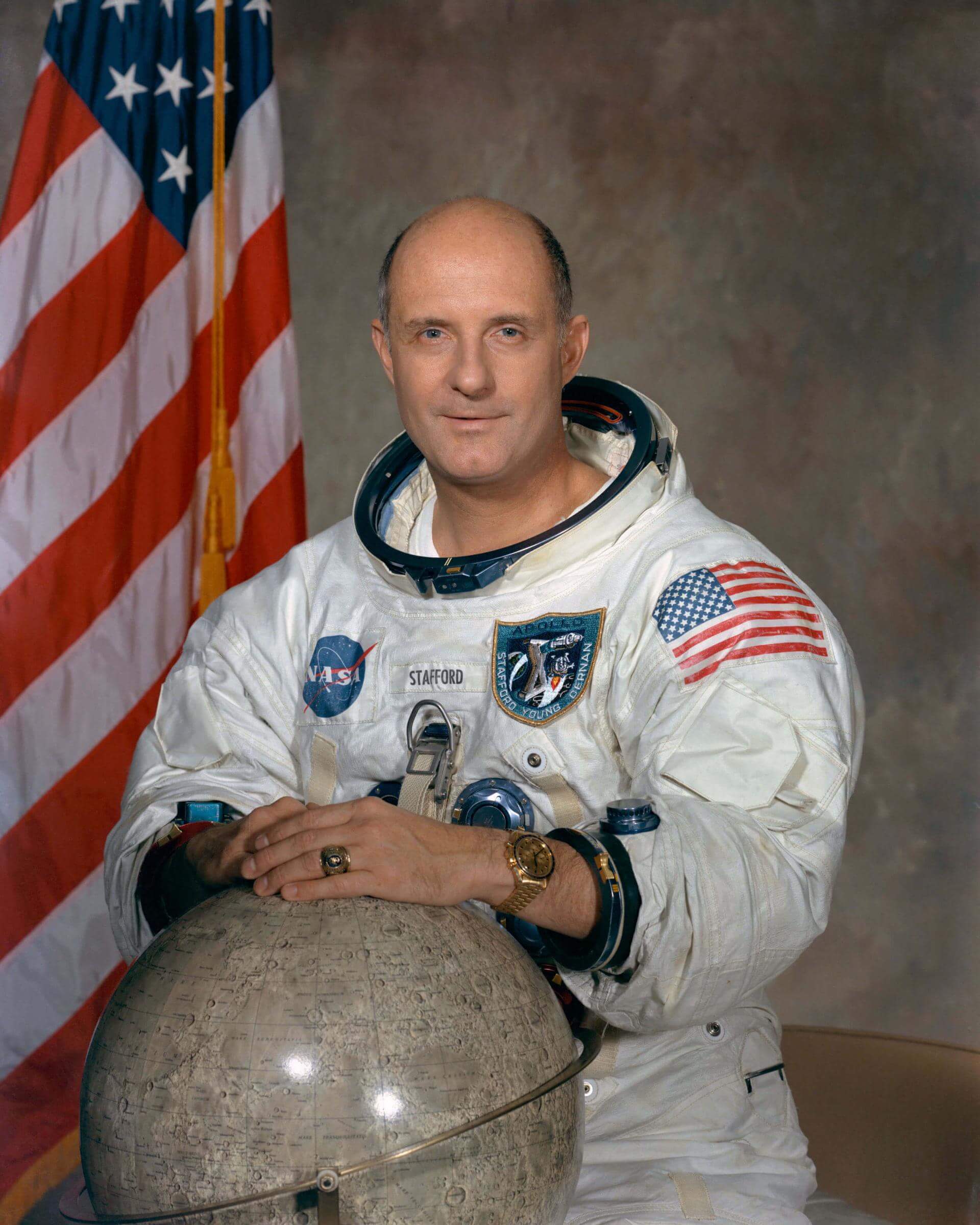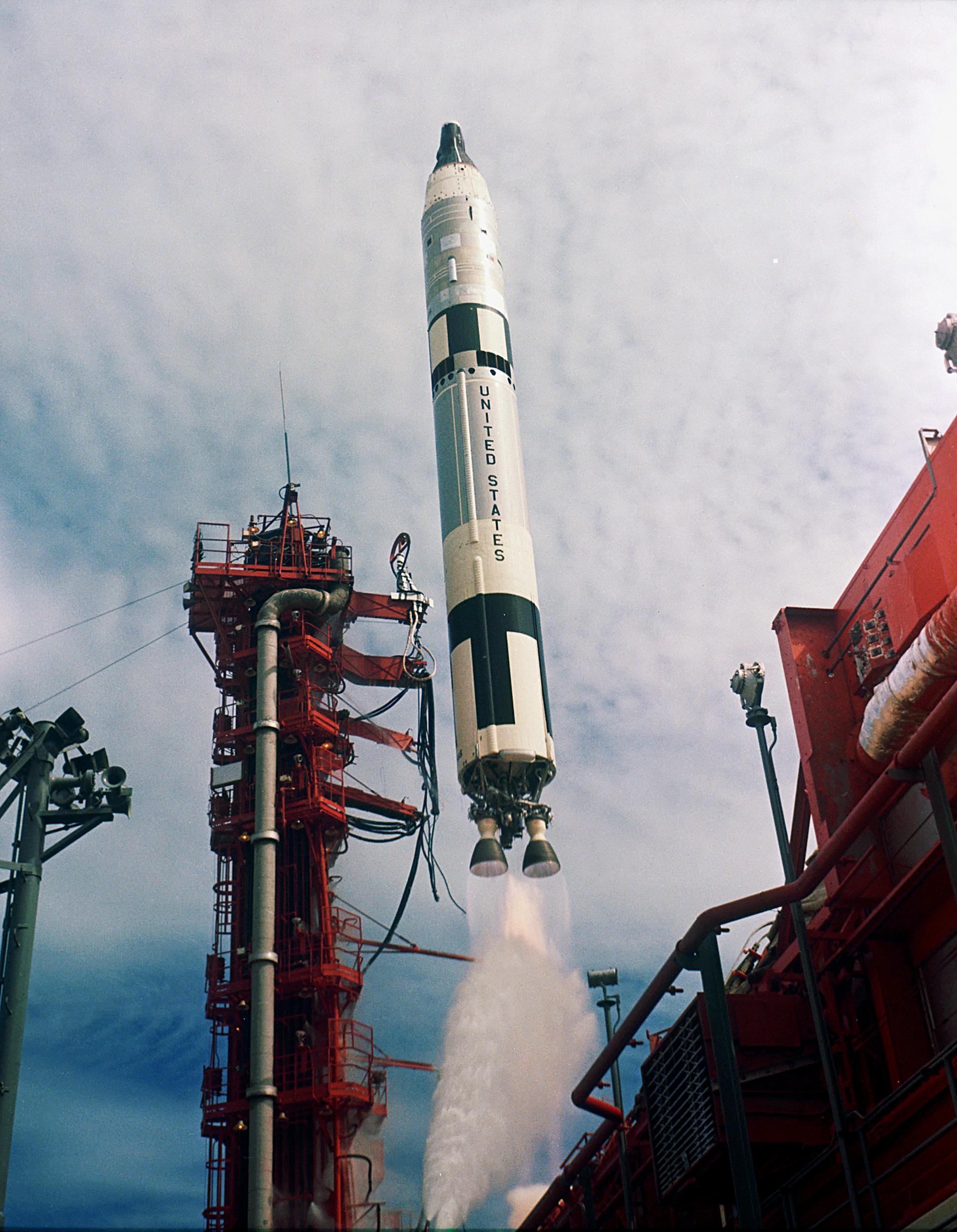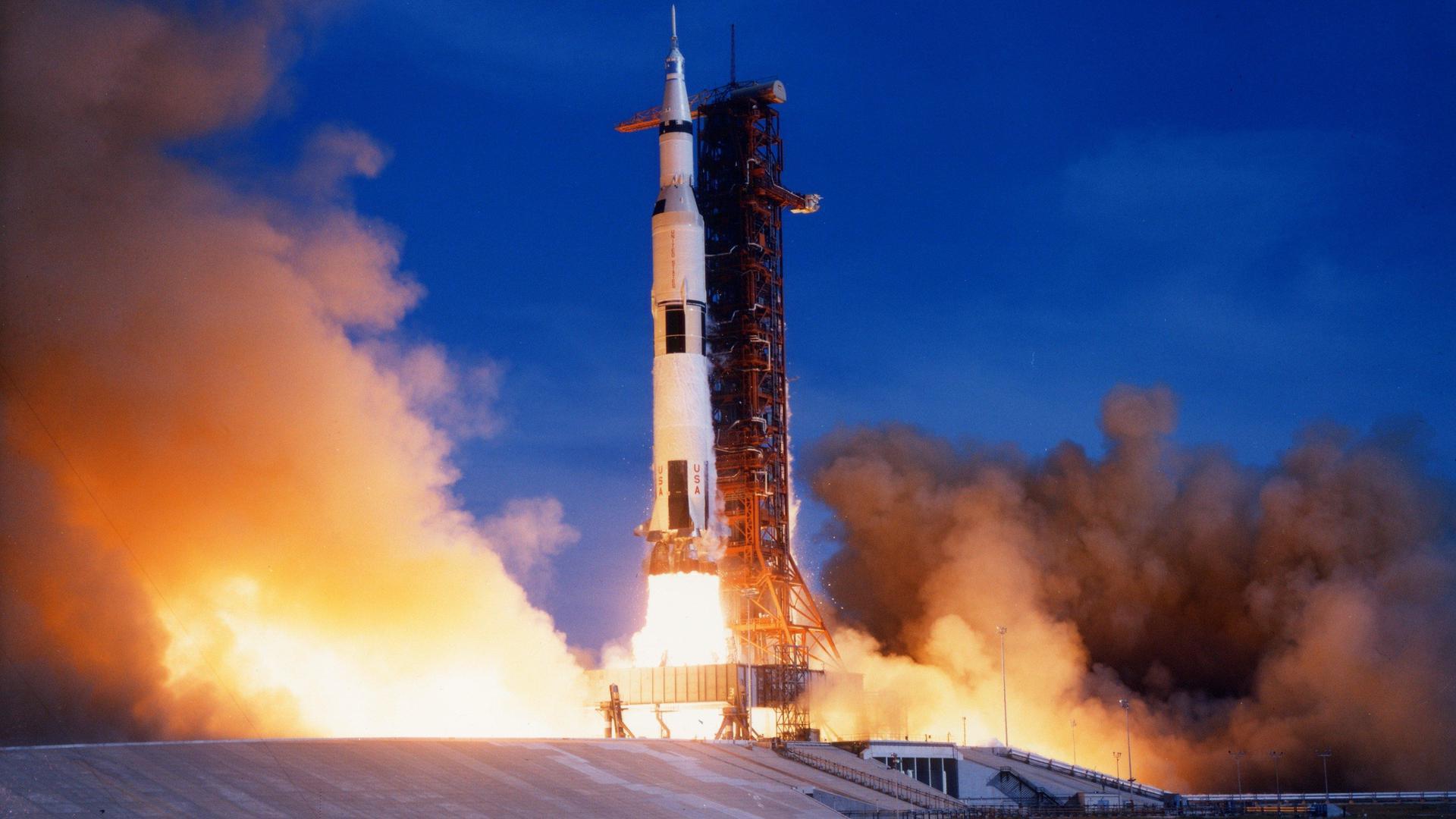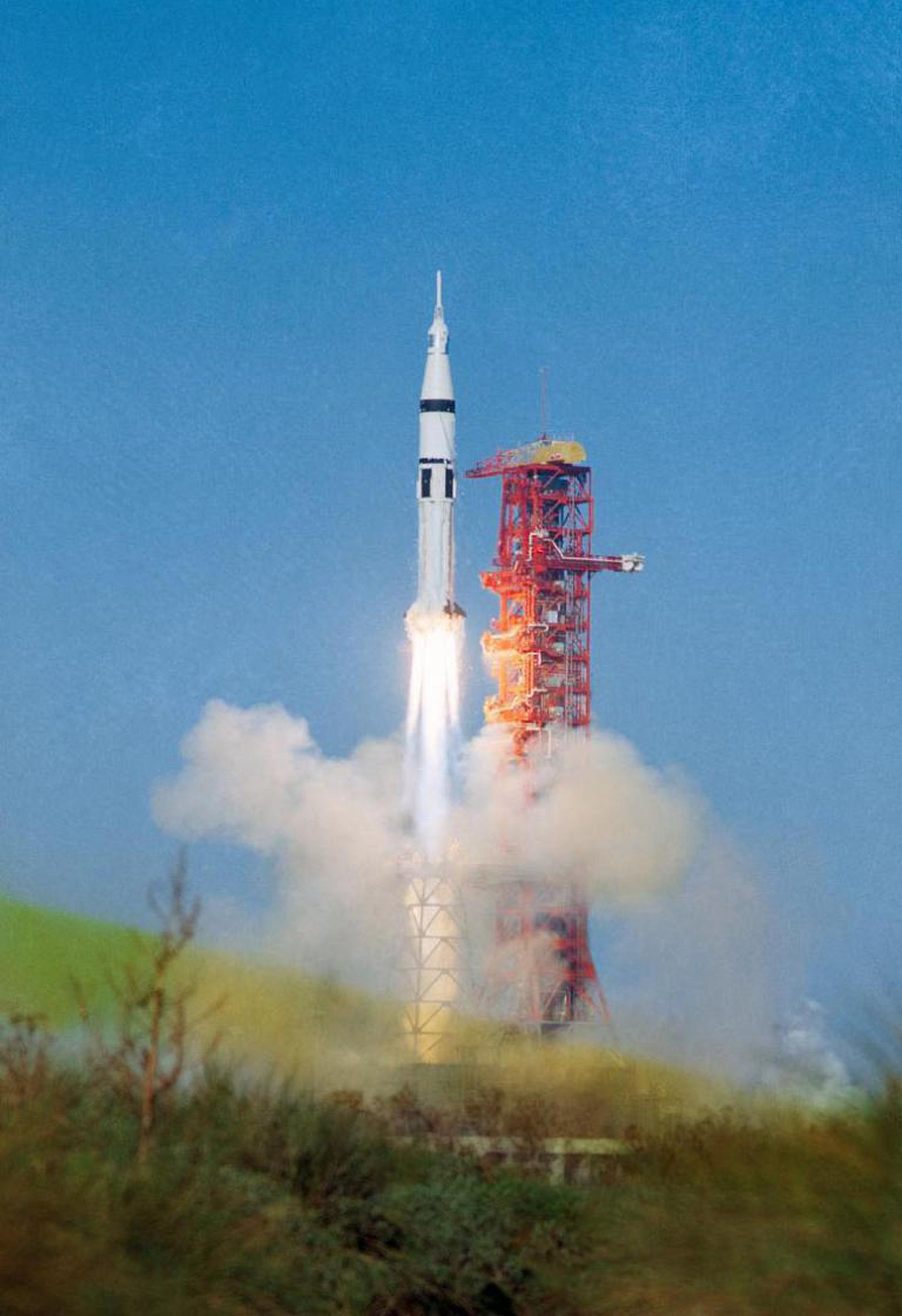Thomas P. Stafford
American - (NASA)
Deceased
Date of Birth: Sept. 17, 1930
Date of Death: March 18, 2024
Thomas Patten Stafford was an American Air Force officer, test pilot, and NASA astronaut.
Titan II GLV | Gemini VI-A
National Aeronautics and Space Administration | United States of AmericaCape Canaveral SFS, FL, USA
Dec. 15, 1965, 1:37 p.m.
Status: Success
Mission:
Gemini 6A was the fifth crewed mission of NASA's Project Gemini. The mission was commanded by Command Pilot Walter M. Schirra, Jr. and Pilot Thomas P. Stafford. The mission achieved the first crewed rendezvous with the Gemini 7 spacecraft. The mission began on December 15, 1965, 13:37:26 UTC and ended on December 16, 1965, 15:28:50 UTC.
Low Earth OrbitTitan II GLV | Gemini IX-A
National Aeronautics and Space Administration | United States of AmericaCape Canaveral SFS, FL, USA
June 3, 1966, 1:39 p.m.
Status: Success
Mission:
Gemini 9A was the seventh crewed mission of the NASA's Project Gemini. The mission was commanded by Command Pilot Thomas P. Stafford and Pilot Eugene Cernan. The astronauts rendezvoused with the Augmented Docking Target Adapter, but were unable to dock due to docking target's fairing which failed to deploy. The mission started on June 3, 1966, 13:39:33 UTC and ended on June 6, 1966, 14:00:23 UTC.
Low Earth OrbitSaturn V | Apollo 10
National Aeronautics and Space Administration | United States of AmericaKennedy Space Center, FL, USA
May 18, 1969, 4:49 p.m.
Status: Success
Mission:
Apollo 10 was Command by Thomas P. Stafford, Command Module Pilot John W. Young, and Lunar Module Pilot Eugene A. Cernan. This mission was a F Mission which means a dress rehearsal for the upcoming Apollo 11 Mission that would be the first crewed mission to land on the moon.
Lunar OrbitSaturn IB | Apollo-Soyuz Test Project
National Aeronautics and Space Administration | United States of AmericaKennedy Space Center, FL, USA
July 15, 1975, 7:50 p.m.
Status: Success
Mission:
The Apollo-Soyuz Test Project was the first joint US-Soviet space flight and the last crewed US space mission until the Space Shuttle program. The US side of mission began on July 15, 1975, 19:50:00 UTC, launching Commander Thomas P. Stafford, Command Module Pilot Vance D. Brand and Docking Module Pilot Donald K. Slayton into orbit. Two days later, they docked with the Soyuz 19 spacecraft. American and Soviet crews visited each other's spacecrafts, performed docking and redocking maneuvers, conducted joint scientific experiments, exchanged flags and gifts. Crews spent more than 44 hours together, and after final parting of the ships on July 19, Apollo crew spent nine more days in orbit, conducting Earth observation experiments. The Apollo crew returned to Earth on July 24, 1975, 21:18:0 UTC with a splashdown in the Pacific Ocean.
Low Earth OrbitThe National Aeronautics and Space Administration is an independent agency of the executive branch of the United States federal government responsible for the civilian space program, as well as aeronautics and aerospace research. NASA have many launch facilities but most are inactive. The most commonly used pad will be LC-39B at Kennedy Space Center in Florida.
Falcon 9
Starlink Group 10-25
Space Launch Complex 40 - Cape Canaveral SFS, FL, USAA batch of 27 satellites for the Starlink mega-constellation - SpaceX's project for space-based Internet communication system.
Falcon 9
MTG-S1
Launch Complex 39A - Kennedy Space Center, FL, USASecond of EUMETSAT's third generation of weather satellite.
New Shepard
NS-33
West Texas Suborbital Launch Site/ Corn Ranch - Corn Ranch, Van Horn, TX, USANS-33 is the 13th crewed flight for the New Shepard program and the 33rd in its history.
Falcon 9
Starlink Group 15-7
Space Launch Complex 4E - Vandenberg SFB, CA, USAA batch of 26 satellites for the Starlink mega-constellation - SpaceX's project for space-based Internet communication system.
H-IIA
GOSAT-GW (Ibuki GW)
Yoshinobu Launch Complex LP-1 - Tanegashima Space Center, JapanGOSAT-GW (Greenhouse Gases Observing Satellite Greenhouse gases and Water cycle), also known as Ibuki GW and formerly known as GOSAT 3, is JAXA's nex…





